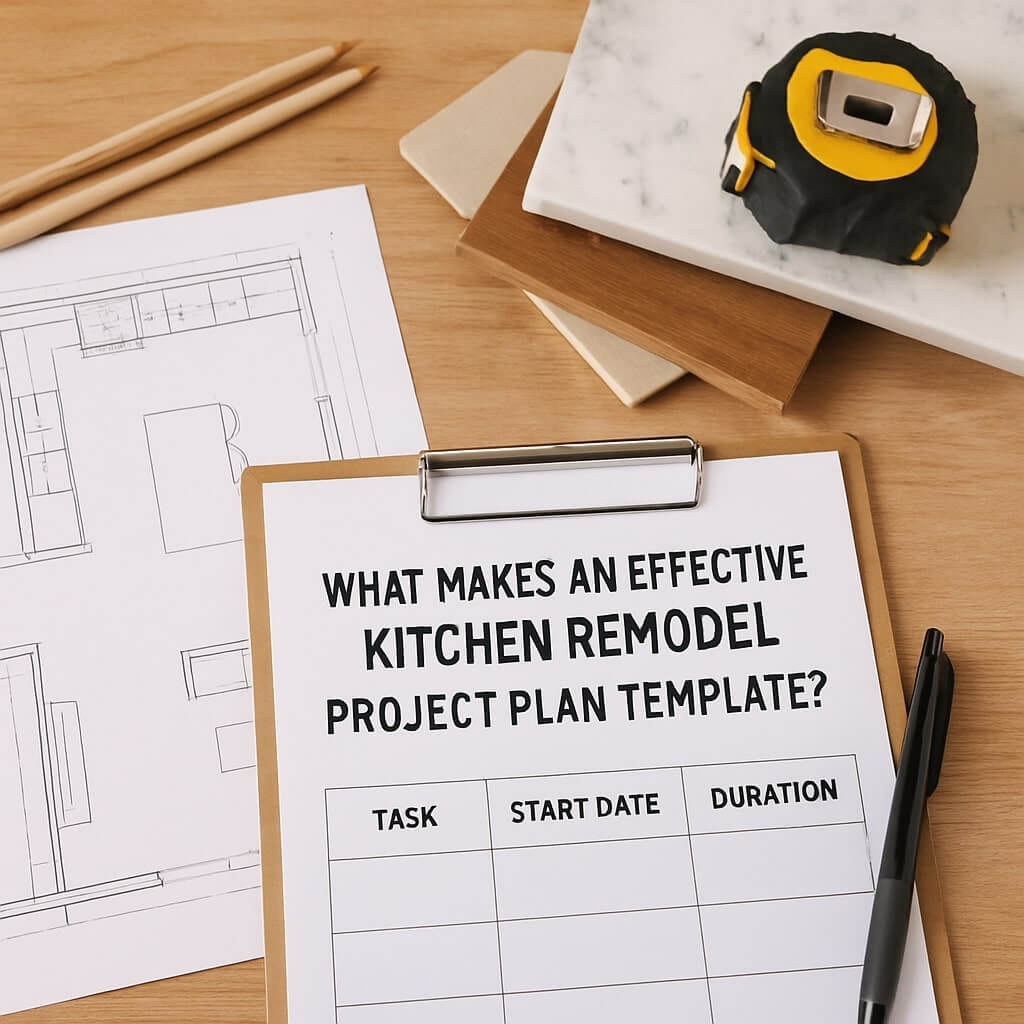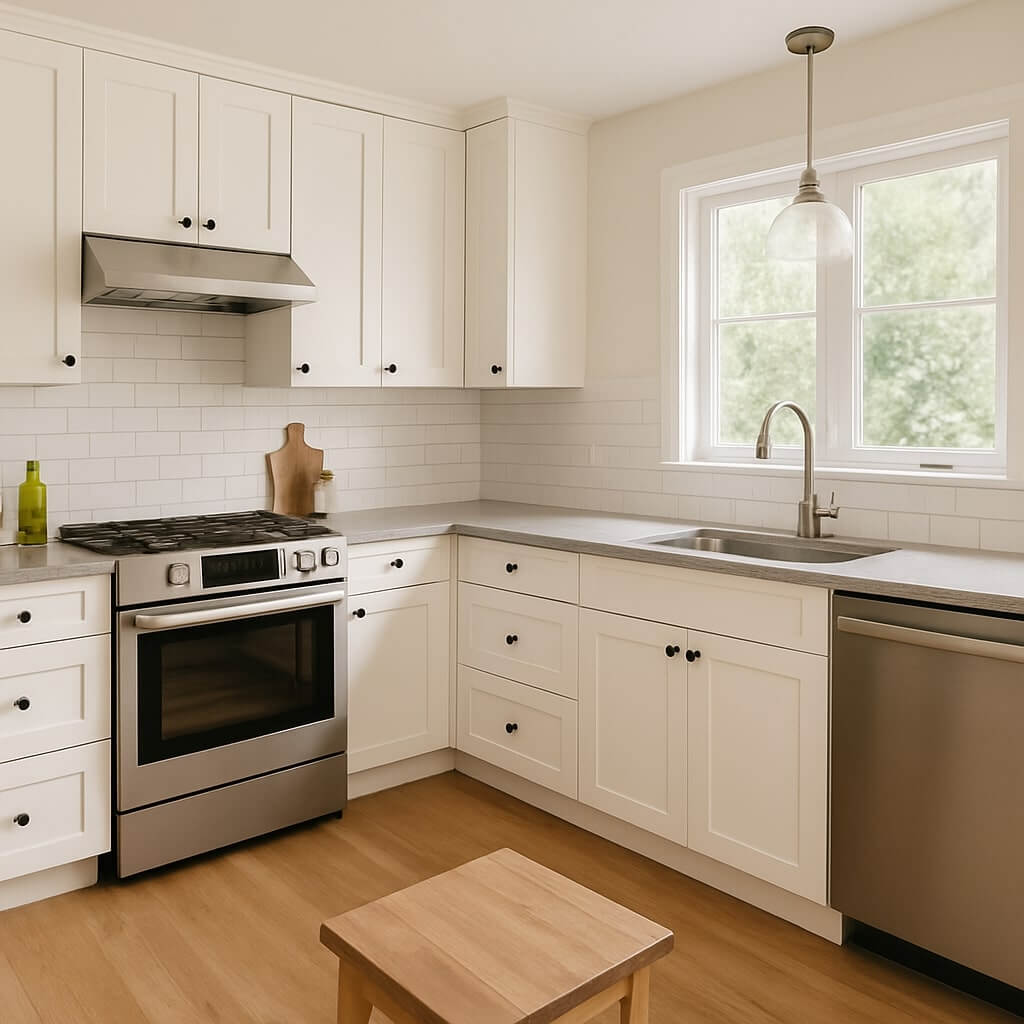When you commence a kitchen remodel, having a solid project plan template is essential. It’s not just about picking colors or countertops; it’s about aligning your vision with practical steps. You’ll need to define your goals, establish a budget, and create a timeline that keeps your project on track. But what about those unexpected hurdles that often arise? Let’s explore how to navigate these challenges seamlessly and guarantee your kitchen transformation unfolds beautifully.
Key Takeaways
- Clearly define goals and objectives to ensure the remodel aligns with your lifestyle and vision for the kitchen.
- Establish a realistic budget that includes materials, labor, and a contingency fund for unexpected expenses.
- Create a detailed timeline with specific milestones for each project phase to track progress effectively.
- Select materials and design elements that are durable, stylish, and reflective of your personal taste.
- Plan for unexpected challenges by conducting risk assessments and monitoring supplier reliability to avoid delays.
Defining Your Goals and Objectives
Why are you starting this kitchen remodel journey?
To infuse your space with life, you need goal clarity and objective alignment.
Picture a kitchen that reflects your style, where every detail enhances your culinary experience.
Define what you truly want: is it a vibrant gathering hub, a sleek culinary haven, or a blend of both?
Jot down your priorities, like expanding storage or optimizing layout.
As you shape these goals, make certain they align with your lifestyle and vision.
This clear foundation will guide every decision, transforming your ideas into a harmonious reality, making your kitchen not just functional, but a joy to behold.
Establishing a Realistic Budget
A well-planned budget is crucial for a successful kitchen remodel, and it’s important to start by determining how much you can comfortably invest.
Begin with a thorough budget breakdown to guarantee you cover all bases.
Consider the following key elements for effective expense tracking:
- Materials: Cabinets, countertops, and flooring
- Labor: Contractors, electricians, and plumbers
- Design Fees: Professional consultation or design services
- Contingency Fund: Extra 10-15% for unexpected costs
Creating a Detailed Timeline
As you commence your kitchen remodel, creating a detailed timeline is essential to guarantee everything flows smoothly and stays on track. Break down your project phases into manageable timeline milestones, ensuring you’re aware of what needs to be completed and when.
Here’s a simple table to help you visualize your timeline:
| Project Phase | Start Date | End Date |
|---|---|---|
| Design & Planning | Week 1 | Week 3 |
| Demolition | Week 4 | Week 5 |
| Installation | Week 6 | Week 8 |
| Final Touches | Week 9 | Week 10 |
With this guide, you’re on your way to a successful remodel!
Selecting Materials and Design Elements
With your timeline set, it’s time to focus on selecting materials and design elements that will bring your kitchen to life.
Consider how color schemes harmonize with your vision while ensuring material durability for long-lasting beauty. Here’s what to keep in mind:
- Choose countertops that blend style with resilience, like quartz or granite.
- Opt for cabinetry that complements your color palette and withstands daily use.
- Select flooring that’s both chic and easy to maintain, such as tile or luxury vinyl.
- Incorporate backsplash tiles that add flair and are resistant to stains.
Let your choices reflect your personality while standing the test of time!
Planning for Unexpected Challenges
While starting your kitchen remodel, it’s essential to anticipate unexpected challenges that could arise during the process. Conducting a thorough risk assessment helps you identify potential issues, allowing you to craft effective contingency plans. Here’s a quick guide to evaluate:
| Challenge | Risk Assessment | Contingency Plans |
|---|---|---|
| Delayed Deliveries | Check supplier reliability | Have backup suppliers on hand |
| Budget Overruns | Monitor expenses closely | Set aside 10-15% extra budget |
| Design Changes | Limit alterations mid-project | Create a flexible design approach |
| Hidden Issues | Inspect thoroughly beforehand | Prepare for potential repairs |
Being proactive keeps your project on track!
Conclusion
In crafting your kitchen remodel project plan, remember that clarity in your goals, a well-structured budget, a thoughtful timeline, and careful material choices are your guiding stars. Embrace the unexpected, turning challenges into opportunities for creativity. This isn’t just a renovation; it’s a chance to weave your unique style into the heart of your home. With these elements in harmony, you’ll transform your kitchen into a beautiful, functional space that reflects who you truly are.




